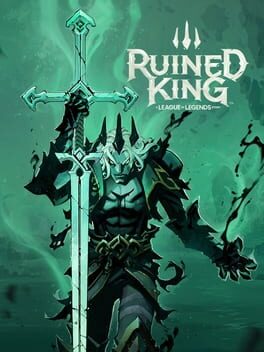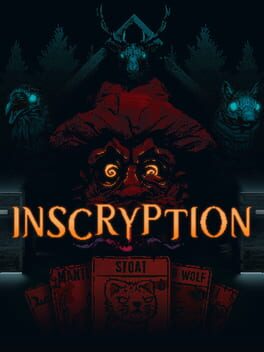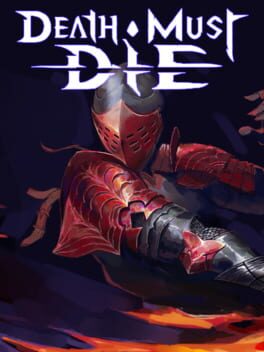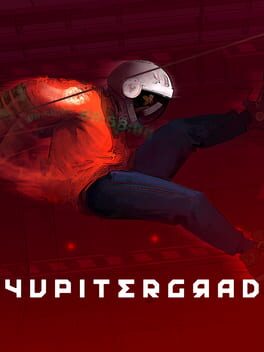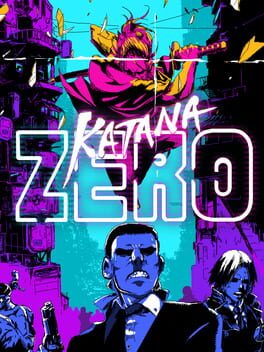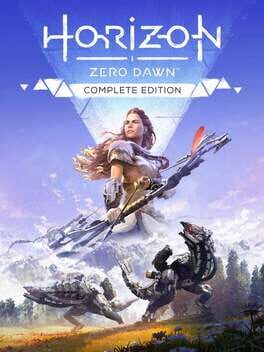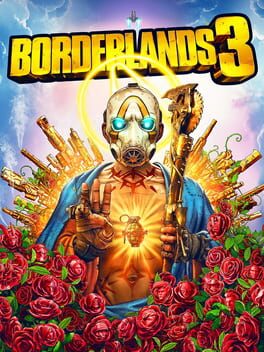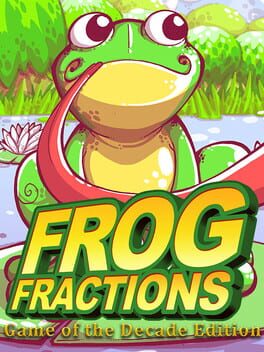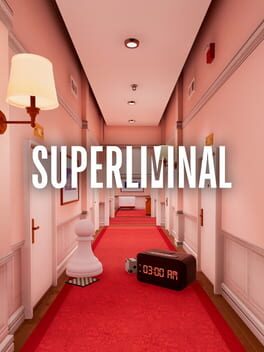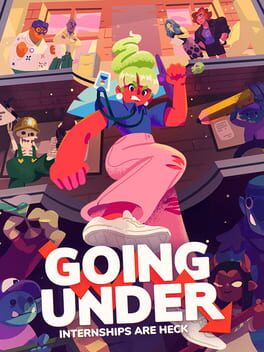theurbanavian
2019
Pretty close to finishing but the game just became an absolute slog towards the end. Will return to it at some point but I enjoyed the writing and central mechanics a lot here. Just very frustrating with how much content I had left compounded by the frequency of very drawn out minor encounters.
Even more spoiled now having played through Sea of Stars, the zone density in Sea of Stars was really nice and made the game feel much tighter.
Even more spoiled now having played through Sea of Stars, the zone density in Sea of Stars was really nice and made the game feel much tighter.
2019
Writing about games is hard, I find myself having a difficult time collecting my thoughts in a cohesive way about a 10 hour experience. To condense a 100+ hour, complicated, multi-chapter experience into a few paragraphs is hard. To keep that cohesive, and not talk about every little thing is even harder. There are several attributes I’d like to talk about with this game, because I feel that it was successful in almost everything it set out to do. I also feel like it’s exceptionally misunderstood.
The thing I find myself wanting to address with Death Stranding is actually about Kojima, I do not believe he is an auteur director like many say he is or at least in the traditional use of the word. It may appear that way, but upon closer inspection it doesn’t stick at least in the way auteur is used to describe directors in film. Kubrick is an auteur, there is a very singular sense of ownership over his body work. A wholistic vision, that isn't just separated from monetary influence, but in the sense that the crew of the film are being used as extensions of Kubrick’s vision, not contributors towards it.
Now I've watched, a countless amount of interviews about this game and I rewatched the opening cinematic just to be sure. It is very obvious that Kojima has a very strong directorial voice but I was immensely surprised by the amount of credit and creative control he gives to the people that worked with him. You just need to listen to how the people who work with him, talk about working with him.
Kojima’s name comes up 5 times in the opening credits, Yoji Shinkawa’s name comes up 3, Norman Mads and Lea come up 3, Troy and Margaret twice, Del Toro and Refn once. One thing that I also commend Kojima a lot for, is that all of the side characters, art directors, and major production artists get intro credit billing. Almost the entirety of the main cast and crew are named in the first 50m of gameplay.
Norman in his interviews, talks about two things. The first is how much of him is Sam, how many of his “Normanisms” are integral to Sam. There is one interview where he said Kojima told him that its not going to be people playing as you, but experiencing you, making a connection with you. Kojima gave as much artistic control you could give to their performers, the character of Sam was in Normans hands not Kojimas.
Yoji Shinkawa getting second billing shouldn’t have surprised me, especially as someone who is familiar with him and his work, and how much history and collaboration him and Kojima have. I read the art book after playing the game and it all made sense. The snippets of design work and/or feedback that Shinkawa got was less of searching for Kojima’s vision of this game, but giving Shinkawa the pedestal to make something even greater than Kojima could envision, and adopt it and incorporate it.
I made a joke about the email you get about Mama's wing to a friend. I said "Wow this email is right from Kojima he must really be proud of himself" and I was half right, it wasn't that Kojima was proud of himself for the idea. When you read through the artbook you can see Yoji’s design notes working through that specific wing design, the idea was all his and that email was written to gush about Yoji Shinkawa.
I have seen in a lot of reviews saying that Death Strandings team needed to tell Kojima "no" more, but from everything I've seen from the people that worked on this game, Kojima was creating a space for everyone to contribute creatively at the thing they were best at, and that criticism to me now almost reads as the Death Stranding team needed to tell themselves to basically not make the game. I think Kojima’s name is top billing mostly because he knew that they had made something truly different than any game of this scope that has been made, and his name could be used as a platform to give the team the space to create what they wanted to create.
The thing I find myself wanting to address with Death Stranding is actually about Kojima, I do not believe he is an auteur director like many say he is or at least in the traditional use of the word. It may appear that way, but upon closer inspection it doesn’t stick at least in the way auteur is used to describe directors in film. Kubrick is an auteur, there is a very singular sense of ownership over his body work. A wholistic vision, that isn't just separated from monetary influence, but in the sense that the crew of the film are being used as extensions of Kubrick’s vision, not contributors towards it.
Now I've watched, a countless amount of interviews about this game and I rewatched the opening cinematic just to be sure. It is very obvious that Kojima has a very strong directorial voice but I was immensely surprised by the amount of credit and creative control he gives to the people that worked with him. You just need to listen to how the people who work with him, talk about working with him.
Kojima’s name comes up 5 times in the opening credits, Yoji Shinkawa’s name comes up 3, Norman Mads and Lea come up 3, Troy and Margaret twice, Del Toro and Refn once. One thing that I also commend Kojima a lot for, is that all of the side characters, art directors, and major production artists get intro credit billing. Almost the entirety of the main cast and crew are named in the first 50m of gameplay.
Norman in his interviews, talks about two things. The first is how much of him is Sam, how many of his “Normanisms” are integral to Sam. There is one interview where he said Kojima told him that its not going to be people playing as you, but experiencing you, making a connection with you. Kojima gave as much artistic control you could give to their performers, the character of Sam was in Normans hands not Kojimas.
Yoji Shinkawa getting second billing shouldn’t have surprised me, especially as someone who is familiar with him and his work, and how much history and collaboration him and Kojima have. I read the art book after playing the game and it all made sense. The snippets of design work and/or feedback that Shinkawa got was less of searching for Kojima’s vision of this game, but giving Shinkawa the pedestal to make something even greater than Kojima could envision, and adopt it and incorporate it.
I made a joke about the email you get about Mama's wing to a friend. I said "Wow this email is right from Kojima he must really be proud of himself" and I was half right, it wasn't that Kojima was proud of himself for the idea. When you read through the artbook you can see Yoji’s design notes working through that specific wing design, the idea was all his and that email was written to gush about Yoji Shinkawa.
I have seen in a lot of reviews saying that Death Strandings team needed to tell Kojima "no" more, but from everything I've seen from the people that worked on this game, Kojima was creating a space for everyone to contribute creatively at the thing they were best at, and that criticism to me now almost reads as the Death Stranding team needed to tell themselves to basically not make the game. I think Kojima’s name is top billing mostly because he knew that they had made something truly different than any game of this scope that has been made, and his name could be used as a platform to give the team the space to create what they wanted to create.
2021
This review contains spoilers
Inscryption was my game of the year for 2021. It is very rare for me to see a developer with the confidence and strength to create such an incredibly strong, compelling, and engaging central mechanic and then have the game move on from it. The central mechanic created in Inscryption’s act I was more than enough to make an incredibly compelling Slay the Spire or Monster Train-esque deckbuilder but that wasn’t all Inscryption wanted to be. Instead moving to Act II it drops the rogue-like and on the fly deck building mechanics, and moves into a constructed card game format.
How incredibly interesting, I was baffled. I had sold this game to other people as I had just started playing it and now here I was looking at this game from a lens I previously hadn’t considered possible. This may not be a surprise but gameplay wasn’t the only area of this game that had that effect on me, its narrative, its exploration, its characters. Inscryption is masterful at getting you to believe in one thing, and then sucker punching you with something else and for me it left me with an experience I don’t think I have had in games, and one that I wish I will get the chance to experience again.
## Act I
Act I is the most engaging part of the game, it has to be because the hooks it sinks into you and the breadcrumbs it leaves for you are what carry you through the rest of the experience. Act I’s atmosphere is incomparable however, it was something I would have loved to do in VR. The escape room rogue-like experience, with one of the most solid deck building mechanics I have seen in this genre, presented to you in this incredibly personal immersive format. You the player are sitting down at this table, your teeth tip the scales, you walk around this room, and you are addressed to directly by the man across the table and the cards are in your hands.
One thing that this game reminds me of is this very primal compelling meta storytelling that is increasingly hard to come by in the day in age of film and video games. The idea of being face to face with your narrator, to be around a campfire sharing a story, to be telling a bedtime story, to be watching a performance directly. That is the relationship you have with the man across the table from you, the game is artifice, the immersion is more about being present and listening rather than losing ones self in the fiction and it has a surprising effect. Because I don’t have to roleplay or put myself in the shoes of another, because the mechanics place me at this table, at this physical space, and because the game isn’t trying to hide its maker, to hide its meta narrator, I find myself completely lost in the world of the game. To the point where I was jump scared by someone walking into my room when I was making a tough decision, or where I find my hands getting sweaty or my heart rising when I have one candle left this level and I’m almost out of items. Or found myself completely averted to ever using the knife, because the thought of cutting my eye to tip the scales stopped becoming a mechanical consideration and one that I genuinely didn’t want to experience. This game might be the best ever at stopping me from treating the mechanics as strictly mechanics, or using my emotions or emotional state to dissuade me from making game theory optimal plays. For instance in Act 1, the Stoat thanked me for sparing him in the tutorial and not sacrificing them, and for the rest of my playtime in act 1 I couldn’t do it. I wanted to protect the Stoat (if only for act 1 that bastard).
I found myself increasingly appreciative of the slay the spire gameplay loop in act 1, if only because it is the first rogue-like card builder that addresses my primary frustrations with the genre. In all other rogue like deck builders I have ever played deck building is about brevity, where your deck size is detrimental. As a player who enjoys constructed formats that are more than a 5-10 card loop, the system of Inscryption’s first act was a breath of fresh air being designed around fewer more significantly meaningful choices, and because the deck size was something that was accountable, as in the range variance is usually within 5 cards per run, the game is balanced around meaningfully using your choices instead of cutting bad cards. Where other games focus on giving you 20-30 choices that focus exclusively on what am I adding, and what am I subtracting from my deck, Inscryption’s gameplay choices are profoundly more interesting. How many pelts should I pick up bricking my deck in the process but obtaining rare cards later in the run, should I pick up doubles of this card to feed to the mushroom men, am I putting too many eggs in one basket by pumping everything into one card, do I risk losing a card to the campfire, do I feed them a ringworm if my deck is weak and sacrifice an upgrade early for a massive boost later. This style of adaptation, of having to workshop your bad cards and make meaningful deck building choices has made Inscryption one of my favorite releases this year.
Now this would be all fine and dandy, and above alone would put Inscryption alongside my favorite rogue-like style games I’ve played. But Inscryption is not a rogue-like deckbuilder, not even remotely, and its substantially better for it. It is an amalgamation of different experiences, alongside its solid central mechanics, it has puzzle & escape room elements, AR story telling, a constructed format, an RPG format, and its all built on the foundation of being a game with an incredibly strong central storyline.
Speaking of, the other central mechanic of Act 1 is the escape room puzzle. One of the most interesting parts of my first play through of the game was figuring out the secrets laid around, originally discovering things that amped my gameplay but in retrospect it was one of the more compelling aspects of the game. Each solution to a puzzle was pointing towards something just out of sight, it started to peel away the curtain, to make me suspect there was something more going on inside of this game. It’s delivery was stellar, and the way the puzzles are set up and communicated I think were pretty flawless, the game has good failsafes that help guide you towards solutions without telling you if you are stuck but every puzzle in act 1 I was able to figure out organically, alongside some more gameplay focused secrets or interactions I was able to discover in a similar fashion. Some of these more interesting little moments foreshadowed future mechanics or developments, with the physical card game of Inscryption being broken into four significant mechanical pillars, Lesheys game is about blood and sacrifice, Grimoira’s game is about bone and resource acquisition, Magnificus’ game is about gems and stat management, and PO3s game is about circuits and board control.
I also want to acknowledge and praise the first major act transition in this game. At this point it should be an expected part of the Daniel Mullins experience, but he is just so unfathomably good at hiding organic feeling secrets as necessary progression paths for the story. When you uncover them, when you put the pieces together, and the game organically opens up to you and transforms into something else. It does something to your expectations, you have spent 12-15 hours playing this neat little card game and raving to your friends about how you like how it plays and then you finally figure out how to leave the room. The game becomes something else entirely, you break the fourth wall of your own enjoyment.
How incredibly interesting, I was baffled. I had sold this game to other people as I had just started playing it and now here I was looking at this game from a lens I previously hadn’t considered possible. This may not be a surprise but gameplay wasn’t the only area of this game that had that effect on me, its narrative, its exploration, its characters. Inscryption is masterful at getting you to believe in one thing, and then sucker punching you with something else and for me it left me with an experience I don’t think I have had in games, and one that I wish I will get the chance to experience again.
## Act I
Act I is the most engaging part of the game, it has to be because the hooks it sinks into you and the breadcrumbs it leaves for you are what carry you through the rest of the experience. Act I’s atmosphere is incomparable however, it was something I would have loved to do in VR. The escape room rogue-like experience, with one of the most solid deck building mechanics I have seen in this genre, presented to you in this incredibly personal immersive format. You the player are sitting down at this table, your teeth tip the scales, you walk around this room, and you are addressed to directly by the man across the table and the cards are in your hands.
One thing that this game reminds me of is this very primal compelling meta storytelling that is increasingly hard to come by in the day in age of film and video games. The idea of being face to face with your narrator, to be around a campfire sharing a story, to be telling a bedtime story, to be watching a performance directly. That is the relationship you have with the man across the table from you, the game is artifice, the immersion is more about being present and listening rather than losing ones self in the fiction and it has a surprising effect. Because I don’t have to roleplay or put myself in the shoes of another, because the mechanics place me at this table, at this physical space, and because the game isn’t trying to hide its maker, to hide its meta narrator, I find myself completely lost in the world of the game. To the point where I was jump scared by someone walking into my room when I was making a tough decision, or where I find my hands getting sweaty or my heart rising when I have one candle left this level and I’m almost out of items. Or found myself completely averted to ever using the knife, because the thought of cutting my eye to tip the scales stopped becoming a mechanical consideration and one that I genuinely didn’t want to experience. This game might be the best ever at stopping me from treating the mechanics as strictly mechanics, or using my emotions or emotional state to dissuade me from making game theory optimal plays. For instance in Act 1, the Stoat thanked me for sparing him in the tutorial and not sacrificing them, and for the rest of my playtime in act 1 I couldn’t do it. I wanted to protect the Stoat (if only for act 1 that bastard).
I found myself increasingly appreciative of the slay the spire gameplay loop in act 1, if only because it is the first rogue-like card builder that addresses my primary frustrations with the genre. In all other rogue like deck builders I have ever played deck building is about brevity, where your deck size is detrimental. As a player who enjoys constructed formats that are more than a 5-10 card loop, the system of Inscryption’s first act was a breath of fresh air being designed around fewer more significantly meaningful choices, and because the deck size was something that was accountable, as in the range variance is usually within 5 cards per run, the game is balanced around meaningfully using your choices instead of cutting bad cards. Where other games focus on giving you 20-30 choices that focus exclusively on what am I adding, and what am I subtracting from my deck, Inscryption’s gameplay choices are profoundly more interesting. How many pelts should I pick up bricking my deck in the process but obtaining rare cards later in the run, should I pick up doubles of this card to feed to the mushroom men, am I putting too many eggs in one basket by pumping everything into one card, do I risk losing a card to the campfire, do I feed them a ringworm if my deck is weak and sacrifice an upgrade early for a massive boost later. This style of adaptation, of having to workshop your bad cards and make meaningful deck building choices has made Inscryption one of my favorite releases this year.
Now this would be all fine and dandy, and above alone would put Inscryption alongside my favorite rogue-like style games I’ve played. But Inscryption is not a rogue-like deckbuilder, not even remotely, and its substantially better for it. It is an amalgamation of different experiences, alongside its solid central mechanics, it has puzzle & escape room elements, AR story telling, a constructed format, an RPG format, and its all built on the foundation of being a game with an incredibly strong central storyline.
Speaking of, the other central mechanic of Act 1 is the escape room puzzle. One of the most interesting parts of my first play through of the game was figuring out the secrets laid around, originally discovering things that amped my gameplay but in retrospect it was one of the more compelling aspects of the game. Each solution to a puzzle was pointing towards something just out of sight, it started to peel away the curtain, to make me suspect there was something more going on inside of this game. It’s delivery was stellar, and the way the puzzles are set up and communicated I think were pretty flawless, the game has good failsafes that help guide you towards solutions without telling you if you are stuck but every puzzle in act 1 I was able to figure out organically, alongside some more gameplay focused secrets or interactions I was able to discover in a similar fashion. Some of these more interesting little moments foreshadowed future mechanics or developments, with the physical card game of Inscryption being broken into four significant mechanical pillars, Lesheys game is about blood and sacrifice, Grimoira’s game is about bone and resource acquisition, Magnificus’ game is about gems and stat management, and PO3s game is about circuits and board control.
I also want to acknowledge and praise the first major act transition in this game. At this point it should be an expected part of the Daniel Mullins experience, but he is just so unfathomably good at hiding organic feeling secrets as necessary progression paths for the story. When you uncover them, when you put the pieces together, and the game organically opens up to you and transforms into something else. It does something to your expectations, you have spent 12-15 hours playing this neat little card game and raving to your friends about how you like how it plays and then you finally figure out how to leave the room. The game becomes something else entirely, you break the fourth wall of your own enjoyment.
2023
Will probably change my rating as more content gets added. The core mechanics are fun, the run variety isn't quite there yet to capitalize on it. I am much more excited for more gods than I am for more heros.
The loot system is okay, I am not a huge fan of diablo-like loot grinding but the permutations it can add is nice, I just wish that it was a little more streamlined. Sorting through loot after a run is the worst part of the experience.
Excited to see what the developer has in store, but I can't say whats here now is particularly worth playing.
The loot system is okay, I am not a huge fan of diablo-like loot grinding but the permutations it can add is nice, I just wish that it was a little more streamlined. Sorting through loot after a run is the worst part of the experience.
Excited to see what the developer has in store, but I can't say whats here now is particularly worth playing.
2021
It hurts to write this review. I wanted to love so much about Loop Hero, but there just isn’t enough here for me to love. This game has such phenomenal systems and groundwork, and some exceptionally good writing for the genre. But the experience is shallow and grind heavy, and there isn’t enough meat to the game to really let its system flourish.
What is there though works so well. The art is gorgeous, the music is fantastic, the gameplay systems are great, the writing is great, the dialogue is great. There just isn’t enough here in this experience, it left me wanting more from it.
The first major pain point of Loot Hero is the card library. There are 32 usable cards in loop hero. Now these cards have unique interactions and can create tiles outside of just the directly usable cards but this game could use more deckbuilding diversity. Have more interesting and meaningful constructed choices, the foundations here are stellar, there aren’t any cards that feel out of place or lack interactions there just isn’t enough.
The second major pain point is that Rogue and Necromancer almost non-functional as characters without forests or dunes, and forests are one of the last unlocks you get in the game. You need to complete 2-3 dozen successful loops to progress to the point of unlocking forests and rivers. The progression here for these characters is painful because of it, and it hurts the diversity of build paths in the early game. Most players being limited to Warrior until they unlocked forest, or playing the noticeably weaker classes to experiment with them.
The third major pain point of this game is that the grind is immense for the amount of content you unlock. Progressing parts of the town feels like such an unbelievable chore, especially early, and caused me to drop the game on my initial playthrough. You will have to do several successful runs in a row before you get a new card or tool to play with. Which creates a bit of frustration, but I understand this decision because there isn’t a lot being locked away.
The thing that wound up frustrating me the most about Loop Hero was its story and writing, because whats in the game is absolutely phenomenal. The main story is fantastic, the antagonists are all incredibly well written and well designed, and the dialogue is a treat. Its fantastic, one of the few games in this genre where I savored every single line. There just needs to be more, I want more dialogue. I want another conclusory line between The Harpy and The Hero, I want to know what the cleric thinks after fighting Alpha and Omega, I want more batshit stuff from The Hunter. Every piece of lore and dialogue had me wanting more, and the game was not the same to me when the story was over and I had exhausted the games dialogue.
Apparently there is a major free content update coming soon, I am so unbelievably excited for it. I will most definitely change my score when it delivers but playing Loop Hero again has me feeling like I am in purgatory.
What is there though works so well. The art is gorgeous, the music is fantastic, the gameplay systems are great, the writing is great, the dialogue is great. There just isn’t enough here in this experience, it left me wanting more from it.
The first major pain point of Loot Hero is the card library. There are 32 usable cards in loop hero. Now these cards have unique interactions and can create tiles outside of just the directly usable cards but this game could use more deckbuilding diversity. Have more interesting and meaningful constructed choices, the foundations here are stellar, there aren’t any cards that feel out of place or lack interactions there just isn’t enough.
The second major pain point is that Rogue and Necromancer almost non-functional as characters without forests or dunes, and forests are one of the last unlocks you get in the game. You need to complete 2-3 dozen successful loops to progress to the point of unlocking forests and rivers. The progression here for these characters is painful because of it, and it hurts the diversity of build paths in the early game. Most players being limited to Warrior until they unlocked forest, or playing the noticeably weaker classes to experiment with them.
The third major pain point of this game is that the grind is immense for the amount of content you unlock. Progressing parts of the town feels like such an unbelievable chore, especially early, and caused me to drop the game on my initial playthrough. You will have to do several successful runs in a row before you get a new card or tool to play with. Which creates a bit of frustration, but I understand this decision because there isn’t a lot being locked away.
The thing that wound up frustrating me the most about Loop Hero was its story and writing, because whats in the game is absolutely phenomenal. The main story is fantastic, the antagonists are all incredibly well written and well designed, and the dialogue is a treat. Its fantastic, one of the few games in this genre where I savored every single line. There just needs to be more, I want more dialogue. I want another conclusory line between The Harpy and The Hero, I want to know what the cleric thinks after fighting Alpha and Omega, I want more batshit stuff from The Hunter. Every piece of lore and dialogue had me wanting more, and the game was not the same to me when the story was over and I had exhausted the games dialogue.
Apparently there is a major free content update coming soon, I am so unbelievably excited for it. I will most definitely change my score when it delivers but playing Loop Hero again has me feeling like I am in purgatory.
2020
I think Yupitergrad is the ultimate VR gaming experience. There is nothing that I personally think has come close to it when it comes to a genuine VR experience that makes use of the headset. The movement is phenomenal, the level design is superb. You feel the speed of grappling through this space station, you get vertigo looking down from some of its immense heights, and the swinging has a surprising amount of control once you get used to your jets/reels.
All in all if there were any game I would tell someone to play to make a full use of their VR headset, it would be this one.
All in all if there were any game I would tell someone to play to make a full use of their VR headset, it would be this one.
2019
I think this game was sold to me in the incorrect way, and I had too high of expectations coming in. A lot of my criticisms are directed towards that, what I was expecting and what I got. I by no means want to say that Katana Zero is a bad game, just that maybe it was too ambitious for what it achieved.
Saying that there are two undeniable parts of the experience of Katana Zero that are almost perfect. The music and visuals of this game are delicious, the way this game animates is superb, the designs are fantastic, the music is beyond exceptional. The visual and audio directions of this game breath so much life into it. Secondly, the gameplay is solid. Maybe the best in the genre, the experience of Katana Zero is kinetic and visceral. It is an unbelievable joy to master screens in this game and watch you decimate them. There is also a very fun gameplay evolution that happens that I think has some cool harmonies with the themes of the game, that against certain screens and certain enemies you eventually stop using the slow-mo in virtue of mastering their moveset. This evolution feels fantastic, and secondly in particular bossfights, the precog thematic works very well with the gameplay. Mastering Headhunter, it being a battle of wills, feels good. I wish there was more of that experience in this game.
Saying that I would like to talk about my disappointments. To put it bluntly, the story aspect of Katana Zero doesn’t work. Not only is it incomplete but it doesn’t work with the gameplay. The dialogue system of this game implies a lot more to the experience than there really is to Katana Zero, there are no meaningful choices. The linearity of this game is extremely apparent on second playthrough, the only thing that really genuinely differs is when you learn about Chronos but even still, it has no thematic, gameplay, or narrative effect on the plot.
Comedy and Tragedy are the worst kind of deus ex machina, and are just bad writing. They represent a fundamental disconnect in the plot that needed to resolve in some other more cohesive way. Zero has no meaningful relationships to any of the antagonists outside of V. V is the only character that interacts with you, that really knows you, that really causes some narrative friction. Snow and her boss aren’t really characters, and that post credit scene was kind of insulting. Dragon is only there to be cool, same with the final boss of the game Headhunter who you have 0 relationship with or even knowledge of during the final boss fight. Most importantly though is your relationship with your “cub” because Katana Zero is ultimately a Lone Wolf and Cub story. The problem is that your Cub has nothing to do with the story, the other characters, the plot movement, or your choices. With the exception being, that Comedy and Tragedy fabricate stakes midway through the game. Its unsatisfying, the ending is confusing, its relevance is perplexing, and it would have been done better if there was any relationship between Zeros motivations (the cub) and the antagonists of this game.
Your choices in Katana Zero don’t matter. This is close to being the most frustrating aspect of the game, because it makes this stories linearity incredibly boring. It makes some of the dialogue (especially the dialogue with Headhunter) stupid or redundant. I dislike the illusion of choice in this game, because it is trying to imply that there are alternatives to the consequences of this game. Why do you have to kill Headhunter? Why do you have to unfreeze Leon? There wasn’t anything more you could do at the conclusion of Electrohead and Josh Ross’s stories? This game makes you think there is more to every decision, but it railroads you insanely hard. The most meaningful choices in this game is how you lie to the secretary in the Josh Ross level.
The most frustrating part of the experience for me in Katana Zero was the credit roll however. I am pretty sure at the end of Chinatown, C&T have a line about the silver mask concluding act one. Not three levels later, the credits rolls (2 if you ignore Dragons tape). There is no closure at the end of Katana Zero, the story is very much in progress. There isn’t a single thread tied up, there isn’t a strong sense of where Zero is in relation to his enemies, and there isn’t really any resolution to Zeros own internal story. He finally got to the part to start the story, to recognize who he was, the story that follows is what he wants to do about it. The way the credits roll in this game are so abrupt, and so jarring, I thought I had missed the proper ending. To find this was the intended experience bothered me immensely.
To end this on a nitpick, the default control scheme on keyboard has a very annoying quirk. There isn’t a tutorial that communicates you have a dedicated roll key, it just tells you that down + direction lets you roll. Thats all fine and dandy until you need a roll on a platform, and you can’t because the down input drops you through it. I thought this was a quirk of this games design, but I learned that controller players have a dedicated roll button and then after completing the game checked the control inputs and found that keyboard players do too its just not communicated to you. This was frustrating, there are some screens in bunker 2 that feel like they were designed around abusing this “quirk” that caused an immense amount of frustration. But I was just playing wrong.
All in all, fun and beautiful side scroller hack and slash with killer tunes and some of the most fun mechanics in the genre. Don’t go in expending more, or you’ll be disappointed.
Saying that there are two undeniable parts of the experience of Katana Zero that are almost perfect. The music and visuals of this game are delicious, the way this game animates is superb, the designs are fantastic, the music is beyond exceptional. The visual and audio directions of this game breath so much life into it. Secondly, the gameplay is solid. Maybe the best in the genre, the experience of Katana Zero is kinetic and visceral. It is an unbelievable joy to master screens in this game and watch you decimate them. There is also a very fun gameplay evolution that happens that I think has some cool harmonies with the themes of the game, that against certain screens and certain enemies you eventually stop using the slow-mo in virtue of mastering their moveset. This evolution feels fantastic, and secondly in particular bossfights, the precog thematic works very well with the gameplay. Mastering Headhunter, it being a battle of wills, feels good. I wish there was more of that experience in this game.
Saying that I would like to talk about my disappointments. To put it bluntly, the story aspect of Katana Zero doesn’t work. Not only is it incomplete but it doesn’t work with the gameplay. The dialogue system of this game implies a lot more to the experience than there really is to Katana Zero, there are no meaningful choices. The linearity of this game is extremely apparent on second playthrough, the only thing that really genuinely differs is when you learn about Chronos but even still, it has no thematic, gameplay, or narrative effect on the plot.
Comedy and Tragedy are the worst kind of deus ex machina, and are just bad writing. They represent a fundamental disconnect in the plot that needed to resolve in some other more cohesive way. Zero has no meaningful relationships to any of the antagonists outside of V. V is the only character that interacts with you, that really knows you, that really causes some narrative friction. Snow and her boss aren’t really characters, and that post credit scene was kind of insulting. Dragon is only there to be cool, same with the final boss of the game Headhunter who you have 0 relationship with or even knowledge of during the final boss fight. Most importantly though is your relationship with your “cub” because Katana Zero is ultimately a Lone Wolf and Cub story. The problem is that your Cub has nothing to do with the story, the other characters, the plot movement, or your choices. With the exception being, that Comedy and Tragedy fabricate stakes midway through the game. Its unsatisfying, the ending is confusing, its relevance is perplexing, and it would have been done better if there was any relationship between Zeros motivations (the cub) and the antagonists of this game.
Your choices in Katana Zero don’t matter. This is close to being the most frustrating aspect of the game, because it makes this stories linearity incredibly boring. It makes some of the dialogue (especially the dialogue with Headhunter) stupid or redundant. I dislike the illusion of choice in this game, because it is trying to imply that there are alternatives to the consequences of this game. Why do you have to kill Headhunter? Why do you have to unfreeze Leon? There wasn’t anything more you could do at the conclusion of Electrohead and Josh Ross’s stories? This game makes you think there is more to every decision, but it railroads you insanely hard. The most meaningful choices in this game is how you lie to the secretary in the Josh Ross level.
The most frustrating part of the experience for me in Katana Zero was the credit roll however. I am pretty sure at the end of Chinatown, C&T have a line about the silver mask concluding act one. Not three levels later, the credits rolls (2 if you ignore Dragons tape). There is no closure at the end of Katana Zero, the story is very much in progress. There isn’t a single thread tied up, there isn’t a strong sense of where Zero is in relation to his enemies, and there isn’t really any resolution to Zeros own internal story. He finally got to the part to start the story, to recognize who he was, the story that follows is what he wants to do about it. The way the credits roll in this game are so abrupt, and so jarring, I thought I had missed the proper ending. To find this was the intended experience bothered me immensely.
To end this on a nitpick, the default control scheme on keyboard has a very annoying quirk. There isn’t a tutorial that communicates you have a dedicated roll key, it just tells you that down + direction lets you roll. Thats all fine and dandy until you need a roll on a platform, and you can’t because the down input drops you through it. I thought this was a quirk of this games design, but I learned that controller players have a dedicated roll button and then after completing the game checked the control inputs and found that keyboard players do too its just not communicated to you. This was frustrating, there are some screens in bunker 2 that feel like they were designed around abusing this “quirk” that caused an immense amount of frustration. But I was just playing wrong.
All in all, fun and beautiful side scroller hack and slash with killer tunes and some of the most fun mechanics in the genre. Don’t go in expending more, or you’ll be disappointed.
2020
The thing bothering me the most about this game and that is stopping me completing it; I hate being talked to like I am in a video game. The immersion breaking is frustrating, the side quests don’t feel like real people, a lot of the outside mission activities refer to like game mechanics or control inputs directly. For an experience where I want to palpably feel the immersion it is absolutely game ruining.
2019
This game is just incredibly bad. I have never had such a profoundly negative narrative experience in gaming before. Every decision that seems to have been made is to rob you of player agency, and while the gun play is the best in the series if you want to actually play the late game you need to get through 20+ hours of story content per character. The grinding experience is the worst of the worst, having to play an enormous amount of boring, unfun, and ridiculously prolonged content to even begin getting weapons that will stay with your character.
The narrative experience here is criminal. It is actually ridiculous considering that this game is the one that followed BL2, BLtPS, and Tales from the Borderlands. It seems like they only bring back certain characters to kill them, the characters from previous entries overstay their welcome, and the new characters don’t have the space nor time to breath. Every potential of something interesting in this game was quickly robbed from me, and what I was left with a game with story that was a pain to playthrough for gunplay and a leveling system that was only alright. Why would I ever play this when Destiny 2 or Warframe exist?
The narrative experience here is criminal. It is actually ridiculous considering that this game is the one that followed BL2, BLtPS, and Tales from the Borderlands. It seems like they only bring back certain characters to kill them, the characters from previous entries overstay their welcome, and the new characters don’t have the space nor time to breath. Every potential of something interesting in this game was quickly robbed from me, and what I was left with a game with story that was a pain to playthrough for gunplay and a leveling system that was only alright. Why would I ever play this when Destiny 2 or Warframe exist?
2019
A succinct and incredibly profound experience that masterfully interweaves its mechanics as metaphor. Its story and message are poignant, its gameplay is solid, and with an incredibly fun and interesting central mechanic to boot.
A Stanley Parable-esque experience but with puzzles.
Also the multiplayer in this game is really really funny.
A Stanley Parable-esque experience but with puzzles.
Also the multiplayer in this game is really really funny.
2015
I liken The Beginners Guide as a video game equivalent of Funny Games, or an editing equivalent of F is for Fake. It’s something that I don’t think really constitutes what a “game” is, but it is an incredibly profound and important piece of media to understand and interpret other pieces of art in its own medium. It is a must play.
2020
Going Under is a game that sold me on its charm and kept me with its depth and its story. A surprisingly short experience with comparable replay value to games other games in its same genre.
Going Under takes a similar approach to Hades, where your reward for playing the game isn’t strictly getting more powerful each run but instead leans heavily into developing relationships with your coworkers and moving forward a very engaging and poignant story. I found myself shocked with how impactful the contents of this game were with how short the narrative experience was.
Going Under also exists in an incredibly unique design space, its visuals are unique and eye catching, but its design problem “what if there was a dungeon crawler where you play as an intern, set in the body of failed tech start ups, set dressed in a corporate alegria art style” is something that I have never seen before, nor knew I wanted. Going Under’s Alegria charm doesn’t just stop at its premise though, between the “smart” weapons that track enemies, the incredibly creative puns/concepts behind each of its dungeons, having your coworkers “mentor” you to give you passives on each run, and the hilarious variety in its enemy/weapon/“app” this game was in all ways surprising and fresh. I find the rogue-like genre space to be completely over saturated with fantasy/sci-fi design, and this game was a refreshingly ballsy move away from it.
Going Under is a must have experience from an upcoming studio that took an incredibly new and fresh take on a genre that has become over saturated with “same”ness.
Going Under takes a similar approach to Hades, where your reward for playing the game isn’t strictly getting more powerful each run but instead leans heavily into developing relationships with your coworkers and moving forward a very engaging and poignant story. I found myself shocked with how impactful the contents of this game were with how short the narrative experience was.
Going Under also exists in an incredibly unique design space, its visuals are unique and eye catching, but its design problem “what if there was a dungeon crawler where you play as an intern, set in the body of failed tech start ups, set dressed in a corporate alegria art style” is something that I have never seen before, nor knew I wanted. Going Under’s Alegria charm doesn’t just stop at its premise though, between the “smart” weapons that track enemies, the incredibly creative puns/concepts behind each of its dungeons, having your coworkers “mentor” you to give you passives on each run, and the hilarious variety in its enemy/weapon/“app” this game was in all ways surprising and fresh. I find the rogue-like genre space to be completely over saturated with fantasy/sci-fi design, and this game was a refreshingly ballsy move away from it.
Going Under is a must have experience from an upcoming studio that took an incredibly new and fresh take on a genre that has become over saturated with “same”ness.

